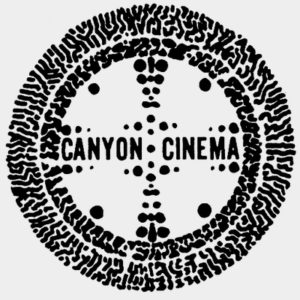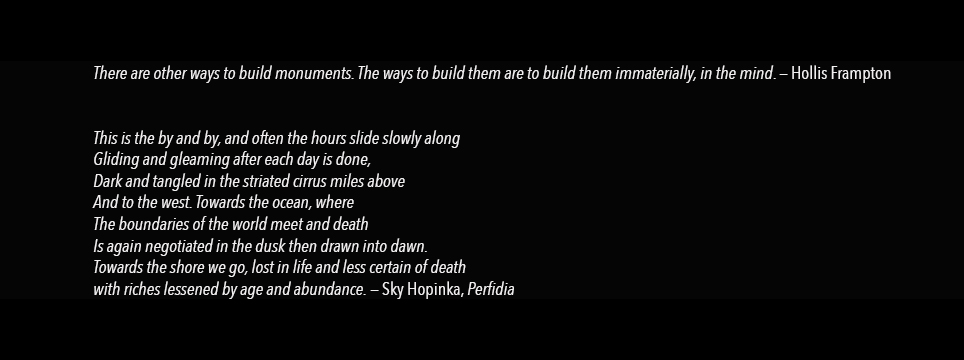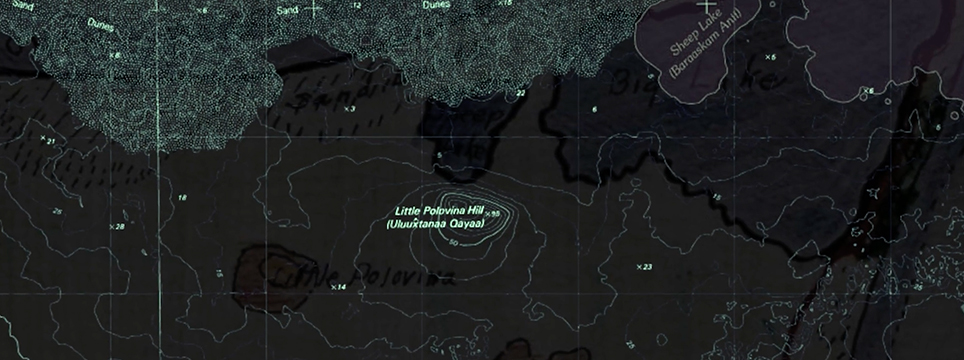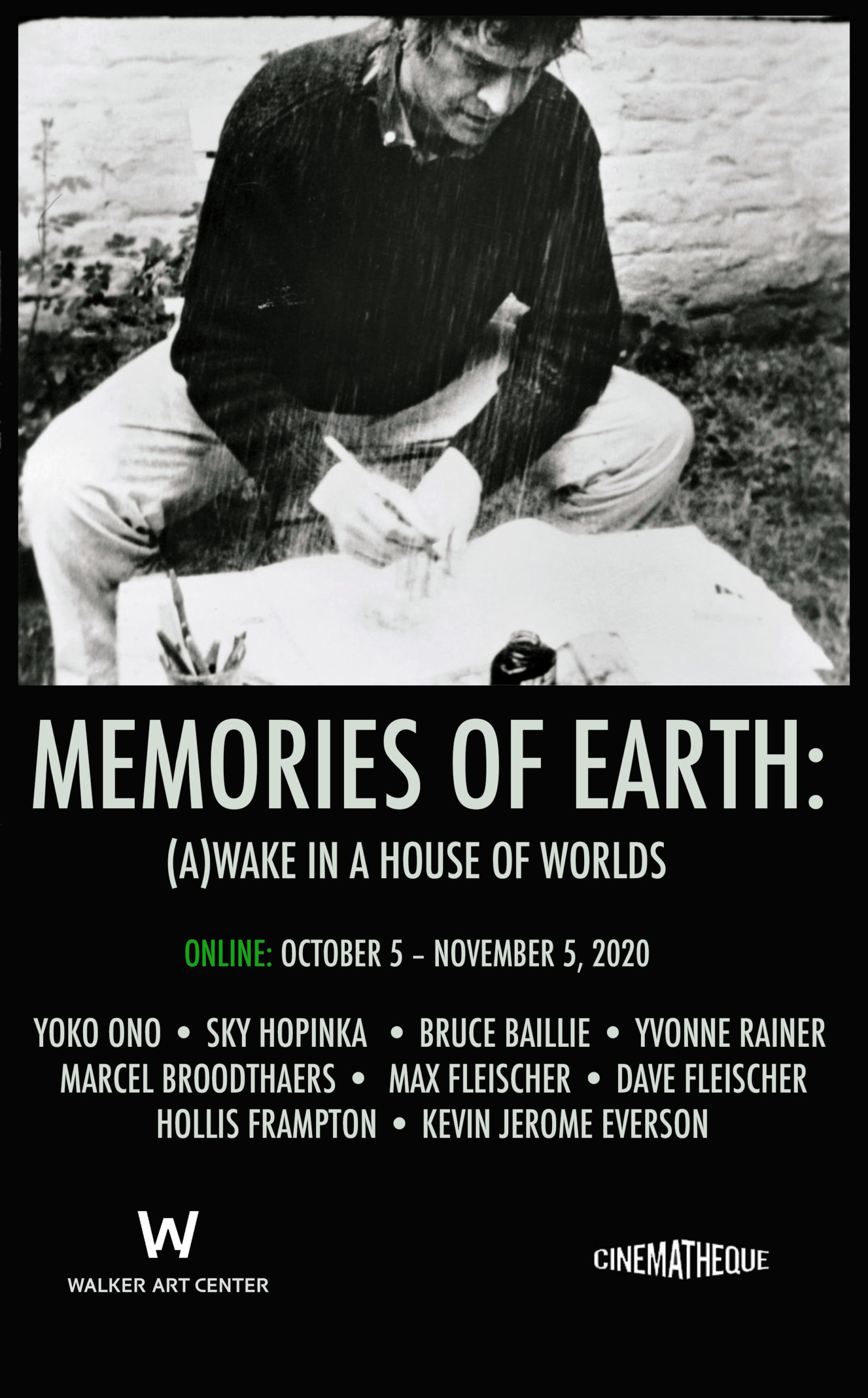
MEMORIES OF EARTH: (A)WAKE IN A HOUSE OF WORLDS
Curated by Oona Mosna
Online October 5–November 5, 2020
Co-presented with the Walker Art Center

The film and digital artworks in this program span the course of more than ninety years. Selected in November 2019 from the Walker Art Center’s Ruben/Bentson Moving Image Collection (Minneapolis) to coincide with their Expanding the Frame series, Memories of Earth: (A)wake in a House of Worlds features a heterogeneous collection of films stressing the polymathy of avant-garde artists troubling conventional methods of working with the moving image across mediums and decades. Death, rebirth and the afterlife figure prominently throughout this selection, as does the subversion of film’s constituent elements to recast notions of what constitutes the cinematic, the political and the poetic.
Originally scheduled for presentation at the Walker in April 2020, this program is dedicated to Sally Dixon (1932–2019) for her early and immense contributions to American avant-garde film. Memories of Earth is free to view. In lieu of admissions, we ask those who are able make contributions to The Cultural Fire Management Council (an organization dedicated to cultural burning on the Yurok Reservation and other Ancestral lands in California), MIGIZI (an Indigenous support network based in Minneapolis), and/or the Navajo & Hopi Families COVID-19 relief fund.
Special thanks to Yoko Ono and Connor Monahan at Studio One; Michael Zryd, York University and Will Faller for the Estate of Hollis Frampton; Madeleine Molyneaux of Picture Palace Pictures; the Estate of Marcel Broodthaers and Kasmin Gallery; Michael Walsh and the Walker Art Center; Yvonne Rainer; Sky Hopinka and Kevin Jerome Everson for permission to make these works available.
SCREENING: One (Fluxfilm 14) by Yoko Ono, 16mm, b&w, silent, 5 minutes, 1966; Ko-Ko’s Earth Control by Max & Dave Fleischer (animated by Dick Heumer), 35mm, b&w, silent, 6 minutes, 1927; Mass for the Dakota Sioux by Bruce Baillie, 16mm, b&w, sound, 24 minutes, 1964; Hand Movie by Yvonne Rainer, 16mm, b&w, silent, 6 minutes, 1966 La Pluie (Project Pour Un Texte) by Marcel Broodthaers; 16mm, b&w, silent, 3 minutes, 1969 Jáaji Approx. by Sky Hopinka; digital, color, sound, 7.5 minutes, 2015 Gloria! by Hollis Frampton; 16mm, color, sound, 9.5 minutes, 1979 Eyeblink (Fluxfilm 9) by Yoko Ono; 16mm, b&w, silent, 5 minutes, 1966 Visions of an Island by Sky Hopinka; digital, color, sound, 15 minutes, 2016 music from the allegheny plateau by Kevin Jerome Everson; digital, color, sound, 7 minutes, 2019
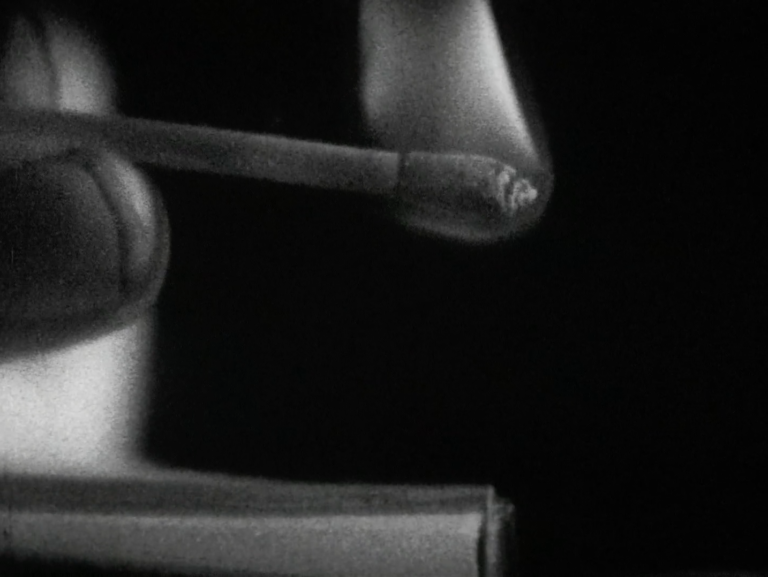
One (Fluxfilm 14) by Yoko Ono, 1966
I thought that there might be some people who needed something more than painting, poetry, and music, something I called an ‘additional act’.— Yoko Ono
Collected as part of the Fluxfilm Anthology (a multi-reel compendium of 37 short films assembled by Fluxus founder and central operator George Maciunas), One captures the lifespan of a single match recorded at 2,000 frames per second using a 16mm high-speed camera. The frame rate is then decelerated to the standard 24fps for presentation. The film emphasizes each gesture, sway and flare of flame as the small pinewood carrier ignites across the landscape of the filmstrip and screen, signalling the drama and poetics of this ”minor” event before the fire is extinguished. One also stands as an unassuming beacon, immortalizing on film the essence of some of Ono’s early concerns as an artist. At the slightest touch of fire, they burst into flame. Strike everywhere. Strike often. — Oona Mosna
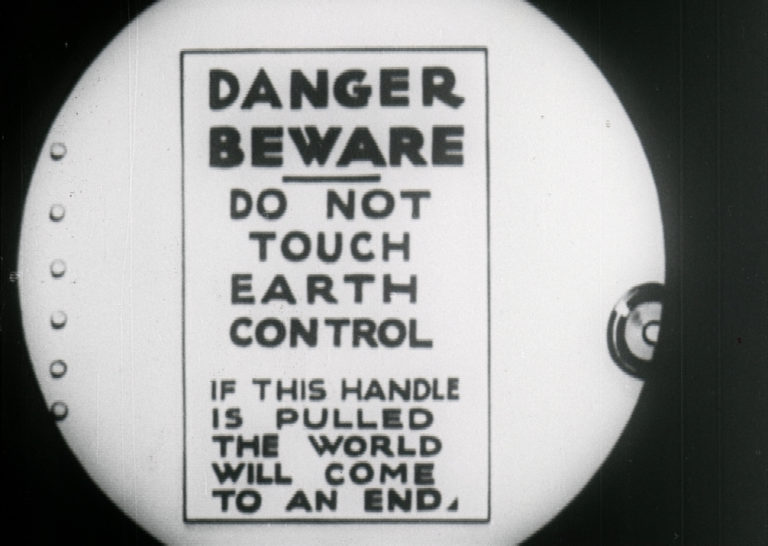
Ko-Ko's Earth Control by Max & Dave Fleischer, 1927
Koko the clown and his canine pal Fritz visit the Earth’s control centre and with the pull of one wrong lever, send the planet into turmoil. — Douglas McCall
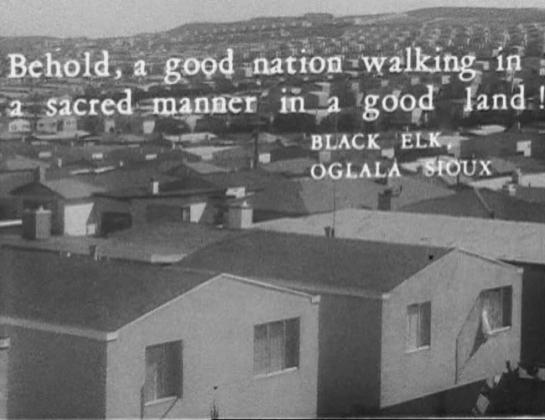
Mass for the Dakota Sioux by Bruce Baillie, 1964
No Chance for me to live, Mother, you might as well mourn.
— Chief Sitting Bull, Hunkpapa Lakota Sioux
Applause for a lone figure dying on the street. INTROIT. A long lightly exposed section composed in the camera. KYRIE. A motorcyclist crossing the San Francisco bridge accompanied by the sound of a Gregorian chant. The EPISTLE is in several sections. In this central part the film becomes gradually more outrageous, the material being either from television or the movies, photographed directly from the screen. The sounds of the “mass” rise and fall throughout. GLORIA. The sound of a siren and a short sequence of a ’33 Cadillac proceeding over the Bay Bridge and disappearing into a tunnel. The final section of the Communion begins with the OFFERTORY in a procession of lights and figures to the second chant. The anonymous figure from the introduction is discovered again, dead on the pavement. The body is consecrated and taken away past an indifferent, isolated people, accompanied by the final chant. — Bruce Baillie
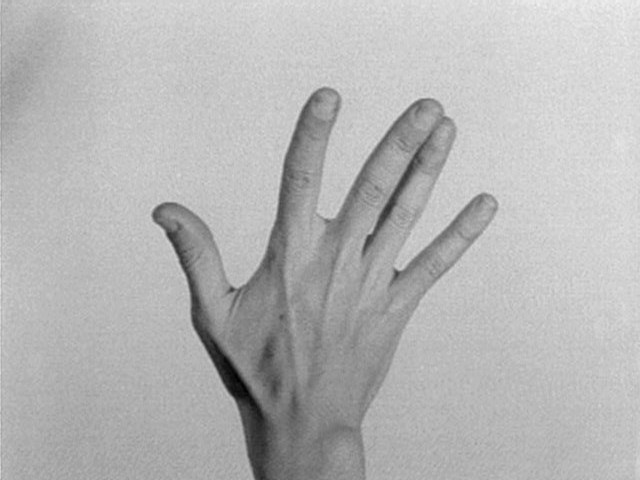
Hand Movie by Yvonne Rainer, 1966
The central issue of Hand Movie… is the inextricability of supposedly second-order processes such as meaning, personality, and projection from the first-order thingness of body and world… But beyond testing dance conventions, Rainer’s work with dance and illness addressed fundamental questions about the status of the human body. For a hospital bed gives special vantage on the degree to which the body is a thing, the degree to which the body is a self, and the validity of that distinction. From this, then, Rainer’s first film: on the one hand, a lesson in physiological mechanics; on the other, in imagination.— Carrie Lambert
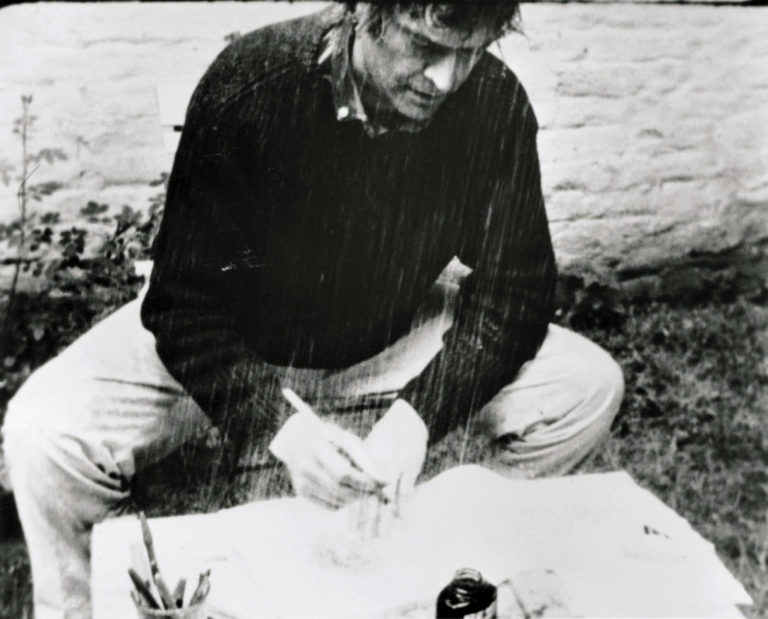
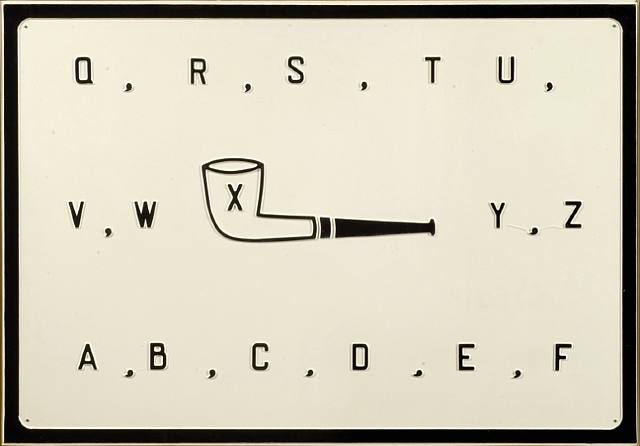
La Pluie (projet pour un texte) by Marcel Broodthaers, 1969
PROJECT FOR A TEXT
I hate the movement that shifts the lines.
If I make a film, for a cinema still defined as a discipline of movement, I have to repeat the lines by Baudelaire, unless I…
1 … don’t make a film and at the same time accept the value of blank film, the filmmaker’s white page and pray others will make it.
2 … make a film at the expense of hatred. A love story for example. That is very appealing but runs the risk of flying the flag for many a commodity, –advertising films, propaganda films, pornographic films.
3 … set aside the problems of the specific language of cinema by considering the film as a simple reference to some abstraction.
Thus in certain kinds of conceptual Art, the film is often a banal intermediary in which the idea plays the main role of subject. But is not the subject diminished by this flatness in the style of transmission, if not absorbed and relegated to a documentary on received ideas that is sometimes original?
… More than cinema, the new techniques of the image (laser?) offer the way to a solution that is, I fear, momentary, if certainly interesting.
But you need to be born to a technological world to use this kind of resource successfully. And here I am cruelly torn between something immobile that has already been written and the comic movement that animates 24 images per second.
PROJECT FOR A FISH. — Marcel Broodthaers
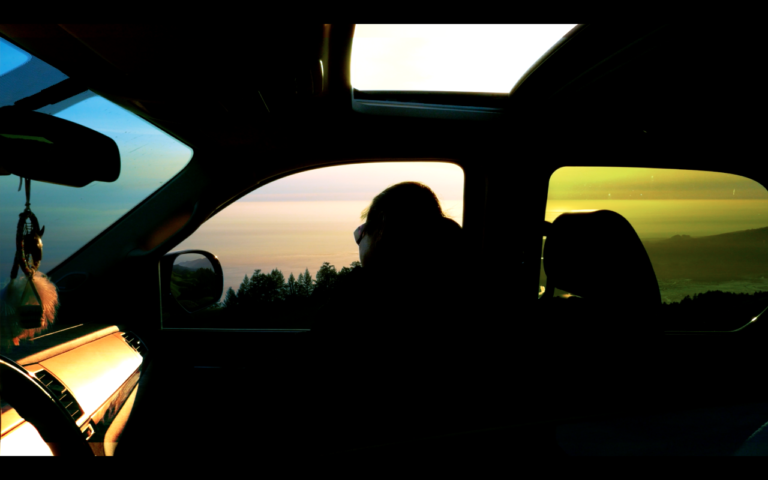
Jáaji Approx. by Sky Hopinka, 2015
Logging and approximating a relationship between audio recordings of my father and videos gathered of the landscapes we have both separately traversed. The initial distance between the logger and the recordings, of recollections and of songs, new and traditional, narrows while the images become an expanding semblance of filial affect. Jáaji is a near translation for directly addressing a father in the Hočak language. — Sky Hopinka
The object is to make the dancers dance, cause once they dance everything else goes into place with the powwow. First starts with the singers, relays out to the dancers, then pretty soon to the audience… — Mike Hopinka

Gloria! by Hollis Frampton, 1979
A drastically innovative work typically calls into question the very boundaries of that matrix, and forces us to revise the inventories of culture … to find out again, for every single work of art, the manner in which it is intelligible. — Hollis Frampton
In Gloria! Frampton juxtaposes nineteenth-century concerns with contemporary forms through the interfacing of a work of early cinema with a videographic display of textual material. These two formal components (the film and the texts) in turn relate to a nineteenth-century figure, Frampton’s maternal grandmother, and to a twentieth-century one, her grandson (filmmaker Frampton himself). In attempting to recapture their relationship, Gloria! becomes a somewhat comic, often touching meditation on death, on memory and on the power of image, music and text to resurrect the past. — Bruce Jenkins
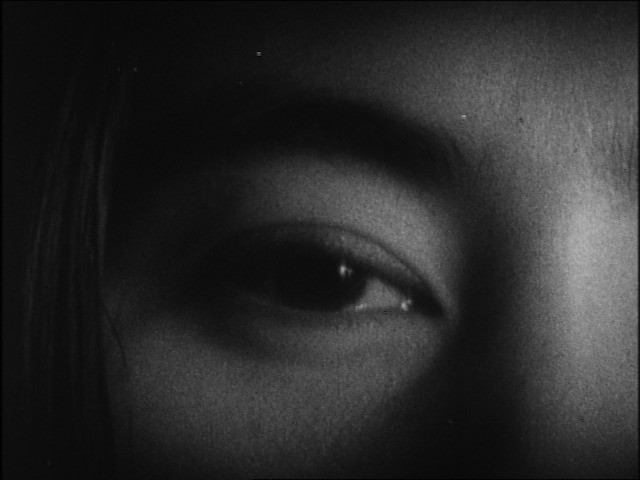
Eyeblink (Fluxfilm 9) by Yoko Ono, 1966
It takes a billion light-years for a blinking star to reach us. Likewise, the light from Earth will take a long time to reach another planet. By using this time warp, we can observe the Earth from different distances, one day, and record what happened on our planet at any given time in the past. All truth in the history of Earth could come to light then. I am sure that the history of the human race, at least, is recorded in our DNA memory genes in its precise detail.
So don’t look back.
Look forward,
Only then
the past will be revealed to us. — Yoko Ono
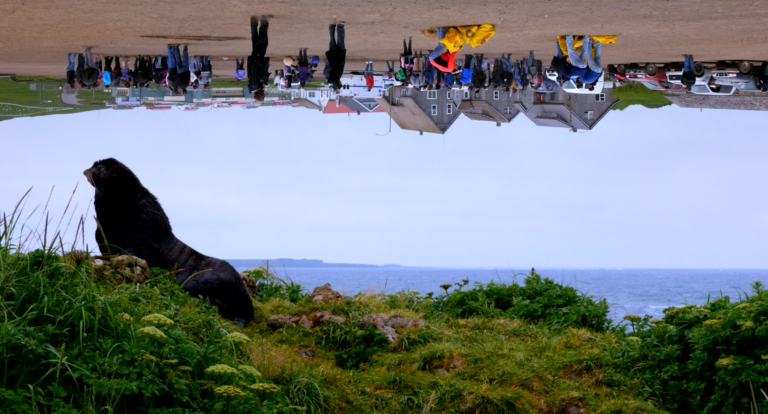
Visions of an Island by Sky Hopinka, 2016
An Unangam Tunuu elder describes cliffs and summits, drifting birds, and deserted shores. A group of students and teachers play and invent games revitalizing their language. A visitor wanders in a quixotic chronicling of earthly and supernal terrain. These visions offer glimpses of an island in the center of the Bering Sea. —Sky Hopinka
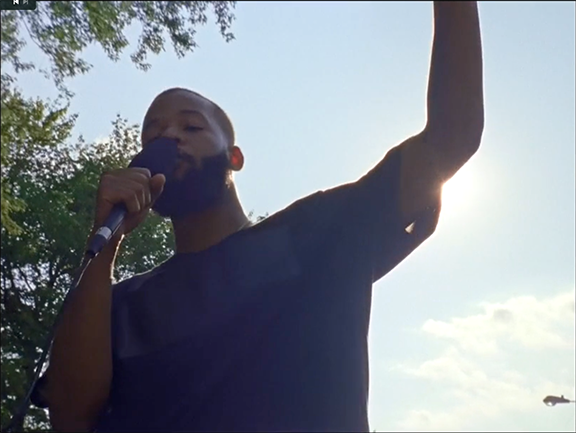
music from the edge of the allegheny plateau by Kevin Jerome Everson, 2019
There’s a spark of magic in your eyes
Candyland appears each time you smile
Never thought that fairy tales came true
But they come true when I’m near you — The Stylistics
Rappers and gospel singers, on the streets and in their homes—music from the edge of the allegheny plateau presents different generations from the African American communities of Mansfield, Ohio, sharing their passions, their talents, and their messages of faith and ambition through music and gesture…Everson underlines the paradox of viewing contemporary black culture through the lens of historical painting. Scenes of Taj Torrence, first seen rapping his own music boldly into the camera, powerfully stands at the back of a truck looking down and gesturing with the sun highlighting his body. Here he owns the moment, the image, perfectly commanding our absolute attention. — Ruth Hodgins
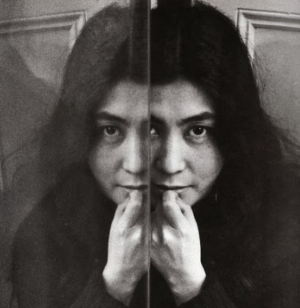
Yoko Ono (Tokyo, Japan 1933). Studied at Gakushūin University (Tokyo) and Sarah Lawrence College (New York). Multimedia artist, singer, songwriter, filmmaker and peace activist, also known for her work in performance art, Ono has completed 20+ films since 1966. She has had screenings and exhibitions, including major solo shows, at The Museum of Modern Art and the Whitney Museum (New York), Kunsthalle Bielefeld, Schirn Kunsthalle (Frankfurt), Guggenheim Museum (Bilbao), Art Gallery of Ontario (Toronto) and countless other venues internationally. Ono is the recipient of a Dr. Rainer Hildebrandt Human Rights Award (2012), the Venice Biennale’s Golden Lion Award for Lifetime Achievement (2009), MOCA Award to Distinguished Women in the Arts (2003), the Oskar Kokoschka Prize (2012), and has received an Honorary Doctorate of Law from Liverpool University (2001) and an Honorary Degree of Fine Arts, Bard College (2002). She lives in New York.
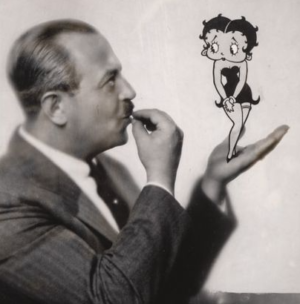
Dave Fleischer (1894–1979) & Max Fleischer (1883–1972) grew up in a household of six siblings in Brownsville, Brooklyn. Early on, Dave worked as an usher at the Palace Theatre on Broadway where he was exposed to vaudeville performances. He later worked as a film cutter for the American branch of Pathé (at the time the world’s largest film production, distribution company, and manufacturer of film equipment). Both experiences proved highly useful when in 1921 he joined forces with brother Max to launch their first film studio, Out of the Inkwell Films, Inc. (later named Fleischer Studios). Max Fleischer was born in Kraków and immigrated with his parents to the US in 1887. He later studied at Cooper Union and the Arts Students League of New York. In addition to being an animator, producer, and film director, Max was responsible for a number of technical innovations, including the invention of the rotoscope. In addition to a slew of collective achievements, the Fleischer brothers produced and released the first sound cartoons, revolutionizing film and animation.
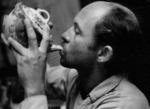
Bruce Baillie (1931–2020) was born in Aberdeen, South Dakota. He studied at the London School of Film Technique, the University of Minnesota and the University of California at Berkeley. In the early 1960s, Baillie quickly became a catalyst of west coast avant-garde filmmaking, co-founding Canyon Cinema and San Francisco Cinematheque with filmmaker Chick Strand in 1961, before making his own astounding contribution as filmmaker to the New American Cinema, alongside peers—including Jonas Mekas, Kenneth Anger and Jack Smith—and influencing a variety of artists from George Lucas to Apichatpong Weerasethakul. His film Castro Street (1966) was selected for preservation in the Library of Congress’ National Film Registry (1991). Many of his films have also been restored by the Academy of Motion Picture Arts and Sciences. Baillie was the recipient of the Maya Deren Independent Film Award, Rockefeller, Guggenheim,and American Film Institute Fellowships. He died in Camano Island Washington in April 2020.
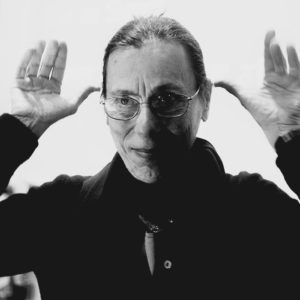
Yvonne Rainer (San Francisco, California 1934) is an American dancer, choreographer, writer and filmmaker. She studied at the Martha Graham Center of Contemporary Dance (1959) and was co-founder of The Judson Dance Theatre (1962). Hand Movie is the first in a series of short and feature-length films created by the artist between 1966-2002. Retrospectives of Rainer’s work have been presented at Lincoln Center for the Performing Arts, Kunsthaus Bregenz; Museum Ludwig; the Getty Research Institute; Jeu de Paume, École des Beaux Artes; Raven Row and other venues. Rainer’s published work includes Feelings Are Facts: A Life (2006); The Films of Yvonne Rainer (1989); A Woman Who…: Essays, Interviews, Scripts (1999); and Moving and Being Moved (2017). She is the recipient of Rockefeller (1988), MacArthur (1990) and Guggenheim Fellowships (1969, 1988), among many other accolades and awards.
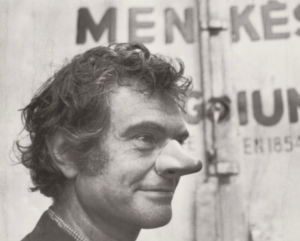
Marcel Broodthaers (1924–1976) was a Belgian poet, filmmaker, artist and political activist whose early associations include Le Groupe Surrealiste Revolutionnaire. Primarily a (frustrated) poet during the initial course of his practice, Broodthaers maintained a life-long interest in the circulatory power of printed matter. He made his first film in 1957, and produced more than 50 short films between 1967–1976. He later worked principally with assemblies of found objects and collage, often containing written texts, and produced large-scale environmental pieces that reworked and satirized the notion of the museum. His work has been included in many solo and group exhibitions, including at The Walker Art Center, Tate Modern, Museo Nacional Centro de Arte Reina Sofía, Kunstsammlung Nordrhein-Westfalen, Museum of Modern Art, Jeu de Paume, Palais des Beaux Artes, and three editions of documenta (1997, 1982, 1972). Broodthaers died on his birthday January 28, 1976. He is buried in Ixelles Cemetery in Brussels.

Sky Hopinka (Ho-Chunk/Pechanga 1984) was born and raised in Ferndale, Washington and spent a number of years in Oregon and California. He received his BA from Portland State University and his MFA in Film, Video, Animation and New Genres from the University of Wisconsin-Milwaukee. His work has been exhibited around the world, including at ImagineNATIVE, Sundance, TIFF, NYFF, the Whitney Biennial, and five editions of Media City Film Festival. His film Jáaji Approx. was awarded MCFF’s Third Prize (2014). He is the recipient of the More with Less Award from the Images Festival (2016), the New Cinema Award at the Berwick Film and Media Arts Festival, and the Mary L. Nohl Fund Fellowship (2018). Hopinka was a fellow at the Radcliffe Institute at Harvard University (2018-2019), Sundance Art of Nonfiction Fellow (2019), a Guggenheim Fellow (2020) and Herb Alpert Award recipient (2020). His newest collection of poetry Perfidia will be released in October 2020.
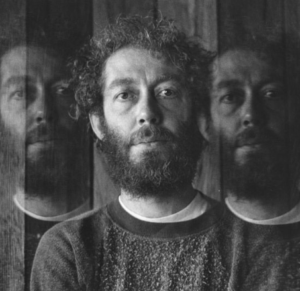
Hollis Frampton (1936–1984) was an American avant-garde filmmaker, photographer, writer, sculptor, theoretician, teacher and pioneer of digital art born in Wooster, Ohio. In 1958 he moved to New York with the intention of becoming a poet but abandoned the idea in favor of photography. His move to film centred around the rise of avant garde filmmaking in New York in the early 1960s, where he emerged as one of the medium’s major figures, producing films alongside contemporaries Michael Snow, Joyce Weiland, Jonas Mekas and many others. Frampton’s more than 60 films, his photographic and other artworks have been exhibited widely and are in the permanent collections of the National Gallery of Art (Washington), the Whitney Museum of American Art, the Museum of Modern Art among many others. A compendium of Frampton’s collected writings On Camera Arts and Consecutive Matters was published by MIT press in 2009. Frampton died in Buffalo, New York after a brief battle with lung cancer.
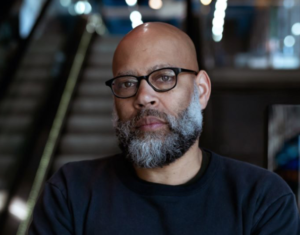
Kevin Jerome Everson (Mansfield, Ohio 1965) is an artist working in film, painting, sculpture and photography. He holds an MFA from Ohio University, a BFA from the University of Akron and is Professor of Art at the University of Virginia, Charlottesville. He has received mid-career retrospectives at Centre Pompidou (2019); Tate Modern (2017); Modern and Contemporary Art Museum, Seoul, Korea (2017); Viennale (2014); Visions du Reel (2012), the Whitney Museum of American Art and Media City Film Festival (2011). His work has been featured at the 2008, 2012, and 2017 Whitney Biennials and the 2013 Sharjah Biennial. Everson is the recipient of the Herb Alpert Award (2012), Heinz Award in the Arts and Humanities (2019), Guggenheim and American Academy in Rome Fellowships, among many other awards and accolades. He has completed nearly 200 films since 1997.
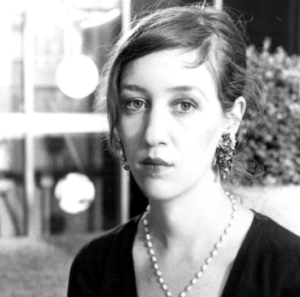 Oona Mosna (Windsor, Ontario 1981) is an artist, author and curator living and working in Windsor-Detroit and internationally. She has organized 1,000+ single screenings, retrospectives and performances with artists including Mati Diop, Barbara Hammer, Sergei Loznitza, Apichatpong Weerastethakul, Ephraim Asili, Valie Export, Kevin Jerome Everson, Artavadz Pelechian and hundreds more for venues including the Toronto International Film Festival, The Presidential Palace (Santiago, Chile) and the Detroit Institute of Arts. Mosna has also produced dozens of avant garde films since 2014 which have screened at Tate Modern, the Whitney Museum of American Art, Smithsonian Museum of African American History and Culture, MoMA, NYFF, Berlinale and her living room, kitchen and backyard. She is director of Media City Film Festival.
Oona Mosna (Windsor, Ontario 1981) is an artist, author and curator living and working in Windsor-Detroit and internationally. She has organized 1,000+ single screenings, retrospectives and performances with artists including Mati Diop, Barbara Hammer, Sergei Loznitza, Apichatpong Weerastethakul, Ephraim Asili, Valie Export, Kevin Jerome Everson, Artavadz Pelechian and hundreds more for venues including the Toronto International Film Festival, The Presidential Palace (Santiago, Chile) and the Detroit Institute of Arts. Mosna has also produced dozens of avant garde films since 2014 which have screened at Tate Modern, the Whitney Museum of American Art, Smithsonian Museum of African American History and Culture, MoMA, NYFF, Berlinale and her living room, kitchen and backyard. She is director of Media City Film Festival.
This program is presented in association with Canyon Cinema. Thank you to the Walker Art Center for their permissions and assistance.
